Playing control is truly an art form. In the early turns, you build your board until you have created a fortress that cannot be breached. Fighting off the creature horde and outplaying opponents who can present problems early and late as well as performing against opponents with similar spells can be quite the feat for someone who is new to control or someone who doesn’t play the best archetype often.
There are a few tricks of the trade that I have learned over the years that I would like to share with you today. A lot of them are general, but there are some specific examples that I’ve thought of that can help some of you improve your game when sleeving up the superior option. For my devout control readers, a lot of these tips will reinforce what you already know, but sometimes a little reinforcement can be helpful.
I see this in control far more than aggro. When a new player sleeves up a nice Esper Control deck in Standard, they often become frustrated with results. There are a variety of ways for you to be the cause of your own demise when battling with control. Incorrect scrying, sideboarding, game management, and misuse of your powerful spells can all factor into losing matches that were potentially winnable. There have been great articles that cover the topic of luck in Magic and how some players blame variance as the main culprit in 99% of their loses. Magic does have variance, but not as much as many players assume. Accepting that fact and continuously improving your game is a way to take down more tournaments and earn more cash.
Correct Scrying & Planning
Scrying is such a small aspect of Standard strategy but can alter an outcome easily. The big picture is game planning, which involves a chess-like mentality in Magic. You can’t play the game by the moment, snap killing whatever you see, playing spells in an incorrect order, and mismanaging your damage intake. This holds true especially in the control game. Aggro players can chose different routes to achieve victory and still get there because their fifth turn accumulated 22 damage instead of 26. There are cases where a blown series of plays can result in 19 damage; however, it is more unlikely that it ends up that way.
When playing control, the chess opponent varies in difficulty. Playing against an aggro player is the equivalent of a young child that just picked up chess a few days prior. The plan against them is pure survival, and the series of plays doesn’t vary too much. Your options in this situation are much more limited, and the spells you need to cast are more obvious. It’s an easy removal spell on turn 2, a tapped scry land on turn 3, and then a Supreme Verdict on turn 4. After you stabilize, you drop a win condition or cast Sphinx’s Revelation and move on with your life. In competitive play, you can still mess up even when the series of plays is clear, and practice combats this issue easily.
Playing against a midrange player is similar to an adept chess player. Your play in this scenario needs to be tight or you’ll fall to the incremental advantage of the Gruul planeswalkers and potent creatures. I have three losses in two StarCityGames.com Invitational Qualifiers, and each loss was to G/R Monsters. All of those matches were close and went to game 3; however, it’s a tough hill to climb for #TeamEsper. Mistakes can make these bad matchups seem impossible.
The biggest tip I can offer to readers playing against G/R Monsters and similar matchups is to save and devote as much removal as possible to the planeswalker half of their deck. Cards like Polukranos, World Eater and Arbor Colossus do not defeat you, but Domri Rade and Xenagos, the Reveler will. Planeswalkers are their key to victory and their method to weaken control opponents enough to deliver the finishing blow. Thoughtseize in the early turns should dispatch a planeswalker, Hero’s Downfall and Detention Spheres should be used on creatures as a last resort (even if a Supreme Verdict only nets one creature), and proper sideboarding of Pithing Needle and Negate should be employed.
I bet you’re thinking "Negate is for control matchups!" And most of the time you’d be correct. However, extreme measures must be taken against G/R Monsters, and cards that are normally devoted to other matchups must be used. Negate costs one less than Dissolve, which provides you an out for turn 3 Domri Rade when you’re on the draw or stops it on turn 2 with their mana accelerant if you’re on the play. As I mentioned, the creatures don’t defeat you, and using Negate also forces you to have willpower because you won’t be able to use it on anything else besides the few planeswalkers that kill you.
The biggest threat is Garruk, Caller of Beasts because one activation ends the game more often than not. My suggestion with this planeswalker is to Pithing Needle it before it has a chance to unleash its power on the board. The other planeswalkers are dangerous too, but this one is the most difficult to beat (especially after sideboard when they have access to Mistcutter Hydra and Ruric Thar, the Unbowed).
Your play in this matchup can derail your victory with a few mistakes, which is directly related to the power level of the cards they use against you. Each card in their deck that doesn’t produce mana can defeat you in the blink of an eye, so use removal wisely, try to swipe mana critters in your Supreme Verdicts, and do all in your power to prevent a planeswalker from running away with the game.
And finally there’s the control mirror, which happens to be my favorite! In this scenario, you’re taking on a professional chess player in reference to the planning that’s involved. I lose all the time in Magic, but when it comes to the control mirror, I have defeated the very best on a regular basis. There’s some luck involved, and deck configuration is key. But the planning and skill in the control mirror can be detailed and complicated. This rule of thumb varies from format to format, and sometimes you’ll just draw three Nephalia Drownyards and call it a day.
The use of Aetherling also makes these control mirrors more "simple" in a game plan used for victory. Even with these haymakers, there are still decisions that transcend from format to format and era to era. Let me give you my two cents on the control versus control battle royale.
1. Don’t blink first. In the days of "draw, go" this was an easy rule to follow. In today’s more "tap out" style control decks, it becomes much harder to do. I see more losses because a player slams Jace, Architect of Thought; it’s countered; and then his opponent plays his planeswalker than I thought possible. This is the biggest mistake I’ve seen when friends of mine or people I watch at Invitationals or Opens play the control mirror, and it drives me up the wall.
There are obvious situations where you don’t have a choice because you risk missing land drops or your opponent is hardheaded, won’t believe you have countermagic, and will try that same planeswalker slam idea if you don’t. These reasons are abnormalities, and learning to play tight and technical is something that will improve your game tenfold.
2. Think about the next turn, the one after that, and your ultimate game plan. This is the planning tip. Stop drawing your card and just playing a spell without thinking about what you’re going to do in a few turns and what your opponent is going to do in a few turns as well. This is the chess strategy, and in the control mirror when you are using many of the same cards as your opponent, the more skilled player will often come away with the victory. My opponent casts Sphinx’s Revelation game 1 for three on my end step, and I slam Dissolve on the table, confidently out card advantaging him, which feels good until he untaps and plays Aetherling. Now I’m dead.
My maindeck is full of anti-aggro cards, but I still walk away with a pile of game 1 wins because I know that in X amount of turns I’ll resolve this Aetherling with the Thoughtseize and Dissolve I’ve held for the entire game. Let that Jace, Architect of Thought and that Blood Baron of Vizkopa resolve and cause havoc because you have developed an ultimate game plan to resolve Aetherling and win the game. This is a general tip. Sometimes the situation may be different, but I hope with practice and strategic planning you’ll improve at creating a game plan.
To Sweep Or Not To Sweep
The proper use of mass removal is essential to control victory. Back in the day it was perfectly acceptable and correct to get the most out of a Wrath of God or Day of Judgment in the early turns. That time isn’t even that long ago if you really think about it. The U/B Control deck that Ali Aintrazi and I played to great success contained some Black Sun’s Zenith and four spot removal spells.
That’s it.
It would sweep the board early and then gradually slay creatures on demand, which would lead to victory very often. The farther back we go in Magic history, the worse creatures get. Those who have been playing the game for some time remember when Troll Ascetic was about as good as it gets for a mana-efficient powerful creature. A creature like that would be barely playable in today’s Standard because of how evolved cards with power and toughness have become.
The time has come when using Supreme Verdict as a glorified spot removal spell is oftentimes correct. Against the biggest decks in the format, you’ll find yourself using Supreme Verdict to dispatch a lone Desecration Demon or a Master of Waves. Gone are the days where you regularly use that control intuition to bait more creatures into your sweeper because as creatures have gotten better so have win conditions for control. It’s all about survival and keeping your life total at a respectable level to then slam that Elspeth, Sun’s Champion or Blood Baron of Vizkopa to begin the winning process.
There are times when a mass removal spell like Supreme Verdict provides upside and is more effective than a spot removal spell. Standard has a few decks that rely on mana dorks, which provides more opportunity for a Supreme Verdict to have a bigger impact on the board. These same decks however can drop a Stormbreath Dragon or Miscutter Hydra that demand an immediate answer. Against a deck like Mono-Black Devotion, holding a Supreme Verdict is a futile strategy because each creature is devastating for a control mage if left unchecked. When playing against Mono-Black, I actually use my board sweeper over a spot removal spell if I have the option to at least maximize mana efficiency.
For example, if your opponent drops a Nightveil Specter and you are holding both a Hero’s Downfall and a Supreme Verdict, I suggest using the Supreme Verdict and saving the instant-speed removal spell. You’ll have situations like this often, and I see this being the case as Magic continues to grow. Creature decks are just more appealing and fun across the board, so Wizards will comply with the wishes of the masses and continue to raise the bar for control mages to stay afloat. Because of this, we have to make sure we play our spells at peak efficiency to avoid losing to ourselves in some situations.
Mass removal isn’t as good as it used to be. I’ve discussed different scenarios regarding when to use a Supreme Verdict, and the actual power of the spell is in question. The format is healthy when board sweepers are feared because the control element keeps creature decks on their toes. There is a smidge of skill involved when it comes to the decision to hold back or to unleash the army of monsters onto the battlefield. Little by little that aspect of the game has diminished over time, and this is in part due to the power of creatures printed.
I think Supreme Verdict is a fantastic spell in current Standard, but I always think along these lines. For the brief time period when there were no four-mana sweeper effects in Standard, I panicked, woke up in a cold sweat, and lived life afraid. Luckily, that was only once and long ago.
With objective and unbiased thinking, Supreme Verdict is decent in the current metagame but not an all-star like it was previously. You can judge the strength of mass removal in current Standard by the creatures you’re slaying. The more efficient the creatures are, the less powerful the board sweeper is. We’re at a point now where Supreme Verdict will be more on a one-for-one basis, especially with the strength of Mono-Black Devotion rising due to Born of the Gods. This being said, Supreme Verdict is still a fine spell—just don’t plan on blowing opponents out with it on a regular basis.
Born Of The Gods
The new set hasn’t given me a lot to be excited about when it comes to improving Esper Control. The following cards are those that could find a home my favorite three-color strategy and that I think you should pick up:
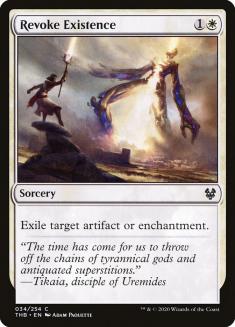
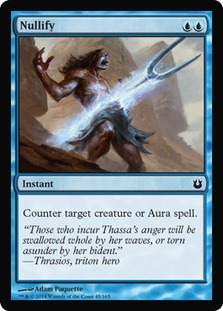
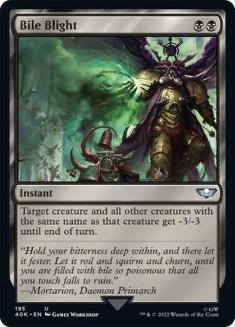
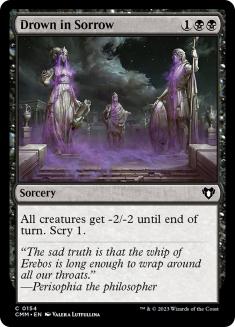
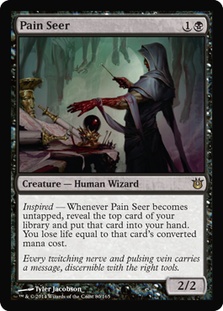
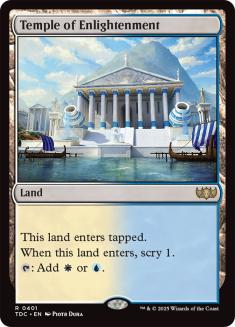
After taking a gander at the cards that interest me, you may shout at the computer screen "Pain Seer?!" Sometimes in life you have to think outside the box, and friends this is the perfect example. The best sideboard cards for the control mirror have always been ones that are aggressive and unexpected. Ali Aintrazi and I won tons of matches on the back of my secret explosive Bloodghast sideboard plan for the U/B mirror. Luminarch Ascension was my favorite out of the board, and even though it may not seem aggressive, it fits the same strategy.
The key is mana cost and opponent accessibility to an answer. There were simply not enough ways to deal with a Luminarch Ascension, and Bloodghast was just unkillable, which leads me to Pain Seer. A turn 2 Pain Seer on the play against the control mirror could be the answer you were looking for. You’ll at worst snag one card before they use Hero’s Downfall or Detention Sphere, but if they’re caught with their pants down, that could be the ball game. You’ll take a lot of damage from flipping an Aetherling or Blood Baron of Vizkopa, but who cares.
People like Brian Braun-Duin have tapped into this strategy recently with Nightveil Specter, but the real advantage of Pain Seer is that it only costs two mana. Curving from that into a Sin Collector after sideboard will leave your opponent helpless to the creature rush they are about to face. This guy is untested, but I’m hopeful he’ll do work.
The other cards are just removal spells and the Temple we’ve all been waiting for. The one I’m most excited about is Revoke Existence. I hate playing against the Thassa, God of the Sea as much as you probably do, and this reprint is enough to get the job done. It deals with all those deities, legendary artifacts/enchantments, opposing Detention Sphere, and any other threatening target for the low price of two mana. I loved it in old Standard, and I think it’ll be great here.
As for the other spells, the big issue is mana cost. There are a lot of double-black, double-blue, and double-white spells that we want for Esper Control, and I’m afraid the mana base can’t handle it. In my next article, I’m going to work on the mana base and tinker with a few of the new spells, but for the Esper faithful out there, just rock the old list with a couple Pain Seers and Revoke Existence in the sideboard and let me know how it goes.
I have hinted on Twitter about a sick Modern Esper Control list, and that will be included as well. I was going to go over it today, but with the banned and restricted announcement today, everything about the deck may have to change. That being said, we all know that Esper is always the way to go. And next week we’ll work on a couple different versions of it.
